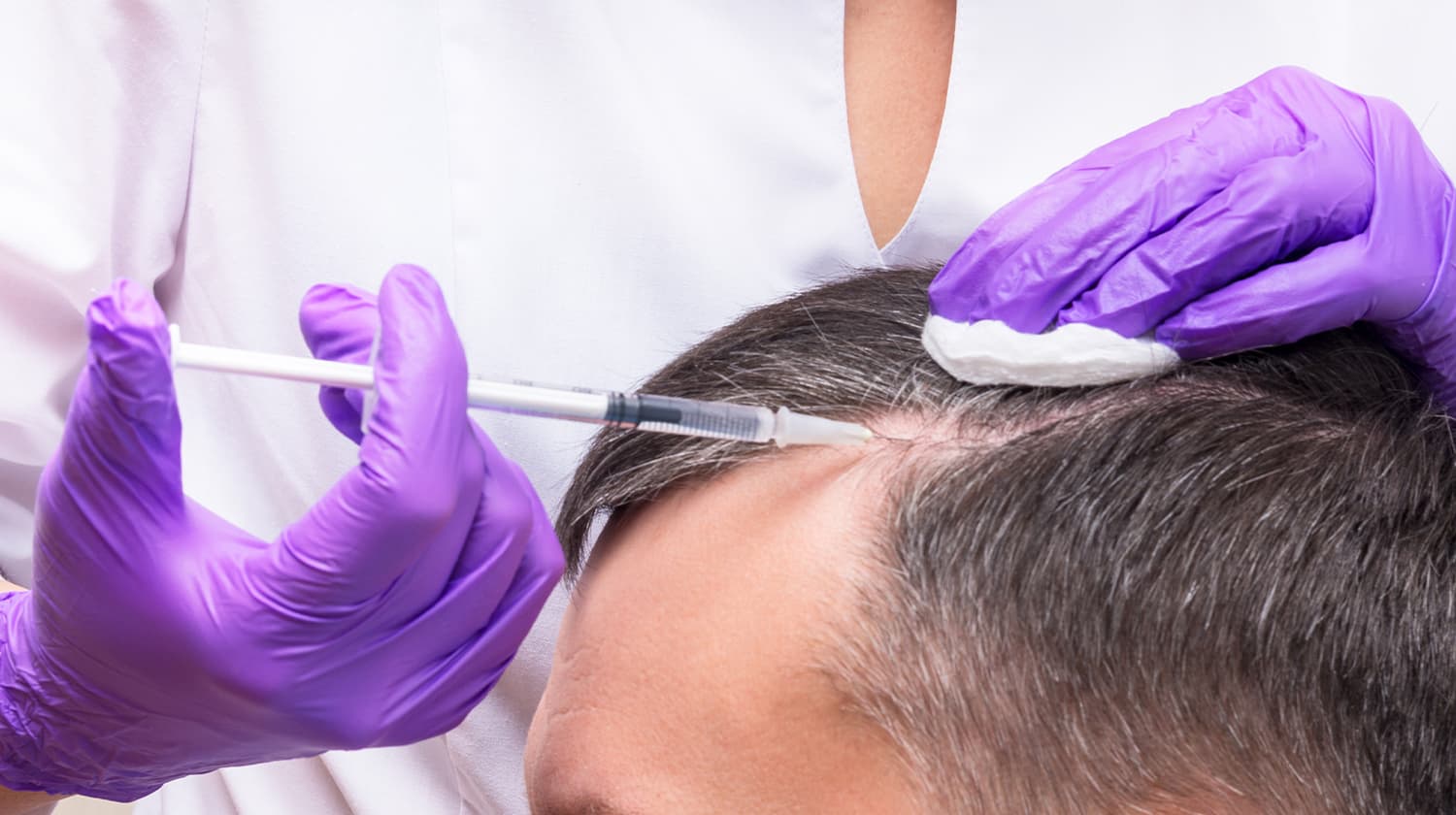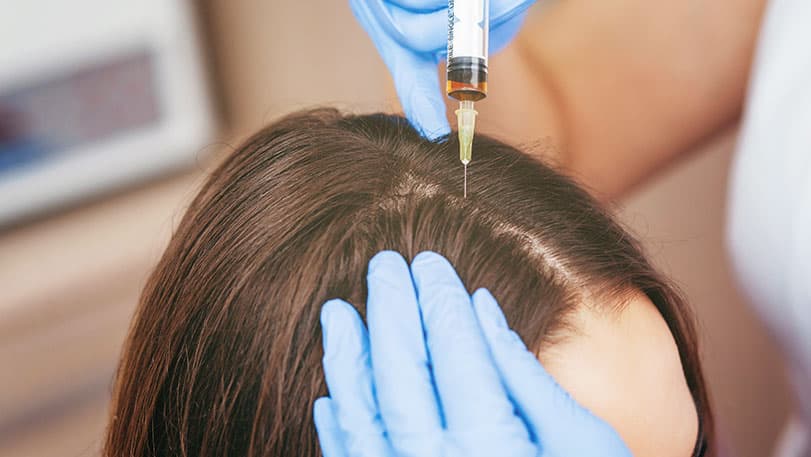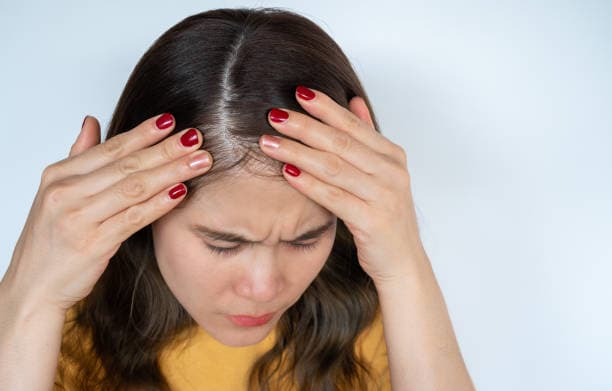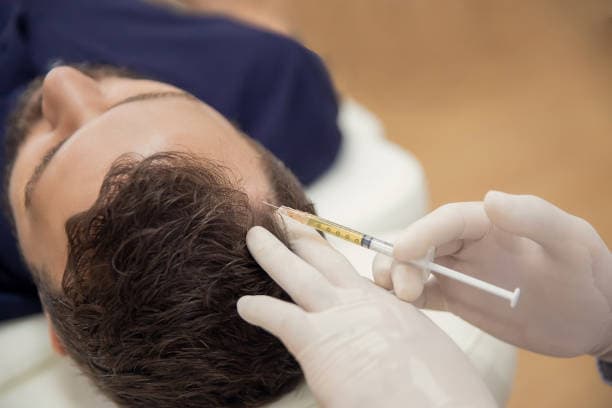Hair filler injections have gained popularity as a non-surgical solution for hair thinning and hair loss. However, like any cosmetic procedure, they come with potential risks and side effects. Common side effects include redness, swelling, bruising, and tenderness at the injection site, which typically subside within a few days.
What is a Hair Filler injection?
Hair filler injections are a cosmetic treatment designed to address hair thinning and hair loss by adding volume and stimulating hair growth in areas with sparse or thinning hair. These injections are typically composed of substances like hyaluronic acid, peptides, and other bioactive ingredients that promote hair health and growth. Hair filler injections offer a promising and less invasive alternative for individuals experiencing hair thinning or hair loss.
Hyaluronic acid, a naturally occurring substance in the body, is known for its ability to retain moisture and promote cell growth. When used in hair fillers, it helps to hydrate the scalp and create a favorable environment for hair follicles to thrive. Peptides, which are small chains of amino acids, play a crucial role in stimulating cell growth and collagen production. These peptides can enhance the strength and thickness of hair, making it appear fuller and healthier.
The procedure involves injecting the hair filler solution directly into the scalp using a fine needle. This process targets the hair follicles, delivering the active ingredients precisely where they are needed. The injections are usually administered in a series of sessions, with each session spaced a few weeks apart to achieve optimal results. The treatment is relatively quick, with minimal downtime, allowing individuals to resume their daily activities shortly after the procedure.

Risks of Hair Filler Injections
Hair filler injections, while offering a promising solution for hair thinning and hair loss, come with a range of potential risks and side effects that individuals should be aware of before undergoing the procedure.
One of the most common side effects is transient pain at the injection site, which can occur immediately after the treatment and typically subsides within a few hours. Additionally, patients may experience redness, swelling, edema, hematomas, itching, and slight pain at the injection area, which generally resolve within 72 hours.
In some cases, individuals may have an allergic reaction to the ingredients used in the hair filler solution. This is particularly concerning for those with hypersensitivity to hyaluronic acid, a common component in hair fillers. Allergic reactions can manifest as severe itching, redness, and swelling, and in rare instances, may lead to more serious complications such as anaphylaxis.
Another risk associated with hair filler injections is the possibility of infection. As with any procedure that involves breaking the skin, there is a risk of bacteria entering the injection site, leading to infection. Symptoms of infection include increased redness, swelling, warmth, and pain at the injection site, as well as fever. To minimize this risk, it is essential to ensure that the procedure is performed in a sterile environment by a qualified medical professional.
Hair filler injections can also lead to vascular complications. If the filler is inadvertently injected into a blood vessel, it can cause vascular occlusion, which restricts blood flow to the affected area. This can result in tissue damage and, in severe cases, necrosis (tissue death). Signs of vascular occlusion include excessive pain, unusual skin discoloration, and skin that feels cool to the touch.
Individuals with certain medical conditions should avoid hair filler injections. For example, those who are pregnant or breastfeeding, using anticoagulants or blood-thinning agents, or have immune system problems or scalp inflammation should not undergo the procedure.

Side Effects of Hair Filler Injection
Hair filler injections, often used to treat hair thinning and promote hair growth, can have several side effects, ranging from mild to more severe. Understanding these potential side effects is crucial for anyone considering this treatment.
Common side effects include redness, swelling, and bruising at the injection site. These symptoms are typically mild and resolve within a few days to a week. Some individuals may also experience itching or tenderness in the treated area. These reactions are generally temporary and can be managed with over-the-counter pain relievers and cold compresses.
In some cases, patients might notice lumps or bumps under the skin where the filler was injected. These can occur if the filler is not evenly distributed or if the body reacts to the injected material. Massaging the area gently can help to smooth out these irregularities, but if they persist, it is advisable to consult with the healthcare provider who performed the procedure.
Allergic reactions are another potential side effect, though they are relatively rare. Symptoms of an allergic reaction can include rash, itching, and swelling beyond the injection site. In severe cases, there may be difficulty breathing or swallowing, which requires immediate medical attention.
One of the more serious but uncommon side effects is infection. This can occur if the injection site is not properly sterilized or if post-treatment care instructions are not followed. Signs of infection include increased redness, warmth, pain, and pus at the injection site. If an infection is suspected, it is important to seek medical treatment promptly to prevent further complications.
Another rare but serious side effect is vascular occlusion, which happens when the filler is accidentally injected into a blood vessel. This can lead to pain, skin discoloration, and tissue damage. Immediate treatment is necessary to dissolve the filler and restore normal blood flow.
Filler migration is a phenomenon where the injected filler moves from its original site to another area. This can result in an uneven appearance and may require additional treatments to correct. Regular follow-up appointments with the healthcare provider can help monitor and manage this risk.
Overall, while hair filler injections can be an effective treatment for hair loss, it is important to be aware of these potential side effects and to discuss them with a qualified healthcare provider before undergoing the procedure. Proper aftercare and monitoring can help minimize risks and ensure the best possible outcome.

Tips on Reducing the Risks of Hair Filler Injection
Hair filler injections can be a great way to enhance the appearance of your hair, but like any cosmetic procedure, they come with potential risks. To minimize these risks, it’s important to take several precautions.
First and foremost, choose a qualified and experienced practitioner. Ensure that the person performing the injections is a licensed professional with a good track record. Research their credentials and read reviews from previous clients to gauge their expertise.
Before undergoing the procedure, have a thorough consultation with your practitioner. Discuss your medical history, any allergies, and your expectations. This will help the practitioner determine if you are a suitable candidate for hair filler injections and tailor the treatment to your specific needs. It’s also important to follow pre-procedure instructions provided by your practitioner. This may include avoiding certain medications, supplements, or activities that could increase the risk of complications.
On the day of the procedure, ensure that the clinic maintains strict hygiene standards. The environment should be clean, and all equipment should be sterilized. The practitioner should wear gloves and use sterile needles to prevent infections. During the procedure, communicate openly with your practitioner. If you experience any discomfort or unusual sensations, let them know immediately.
After the procedure, follow post-care instructions diligently. This may include avoiding strenuous activities, not touching or scratching the treated area, and using any prescribed medications or ointments. Keeping the treated area clean and dry is crucial to prevent infections. Additionally, monitor the treated area for any signs of complications, such as excessive swelling, redness, or pain. If you notice anything unusual, contact your practitioner promptly.
It’s also beneficial to maintain a healthy lifestyle to support the overall health of your hair and scalp. Eat a balanced diet rich in vitamins and minerals, stay hydrated, and avoid excessive use of hair styling products that can damage your hair. Regularly washing and conditioning your hair can also help maintain its health.
Lastly, manage your expectations. While hair filler injections can provide noticeable improvements, they may not achieve perfection. Understanding the realistic outcomes of the procedure can help you feel more satisfied with the results.
By taking these precautions and following these tips, you can significantly reduce the risks associated with hair filler injections and enjoy the benefits of a fuller, more voluminous head of hair.

Conclusion
In conclusion, while hair filler injections can offer significant aesthetic benefits, it’s crucial to be aware of the potential risks involved. By choosing a qualified practitioner, adhering to pre- and post-procedure instructions, and maintaining open communication with your healthcare provider, you can minimize these risks. Additionally, maintaining a healthy lifestyle and managing realistic expectations can further enhance the overall outcome. Remember, the key to a successful hair filler injection lies in thorough preparation, diligent aftercare, and informed decision-making.
Read More